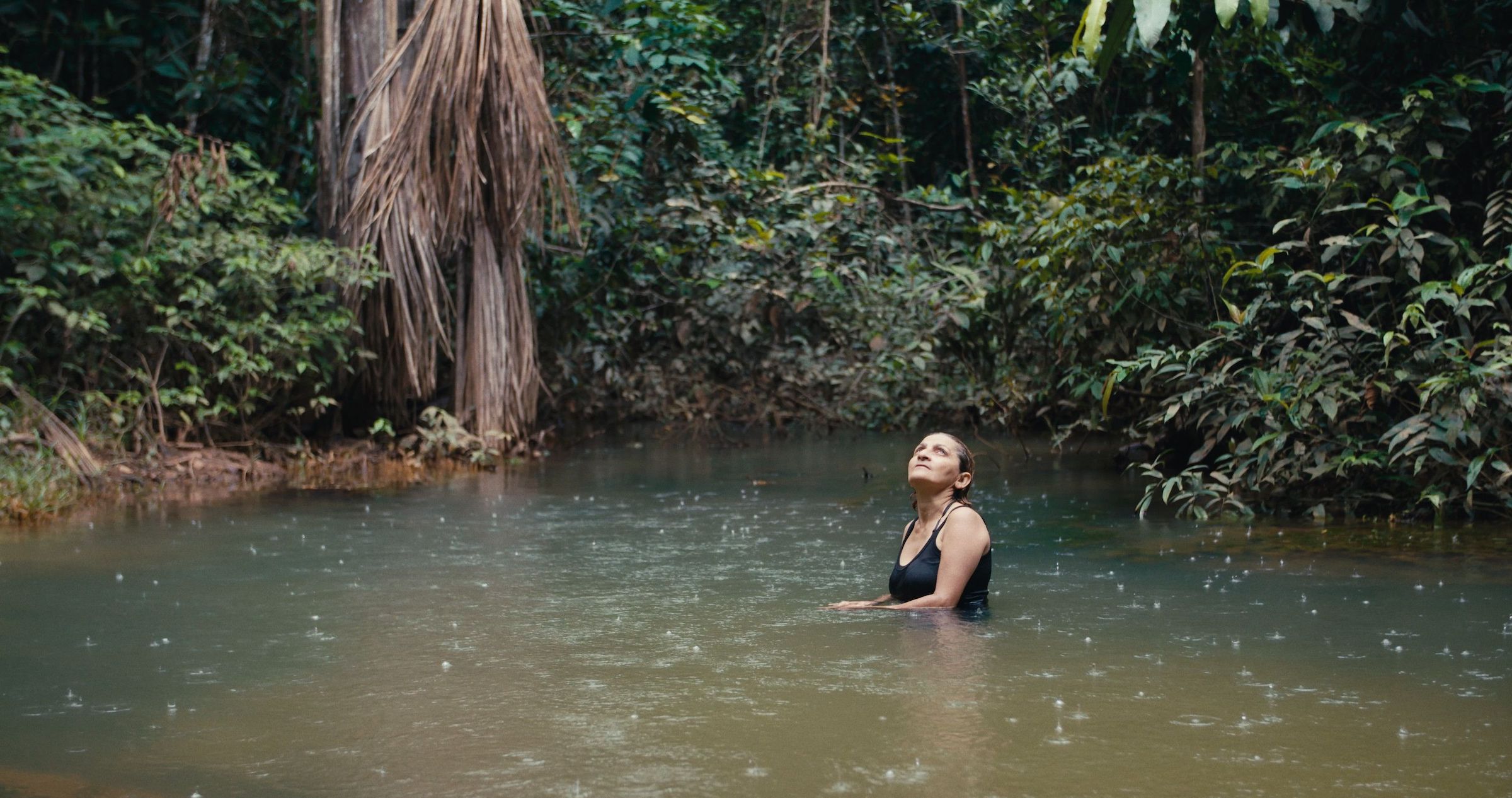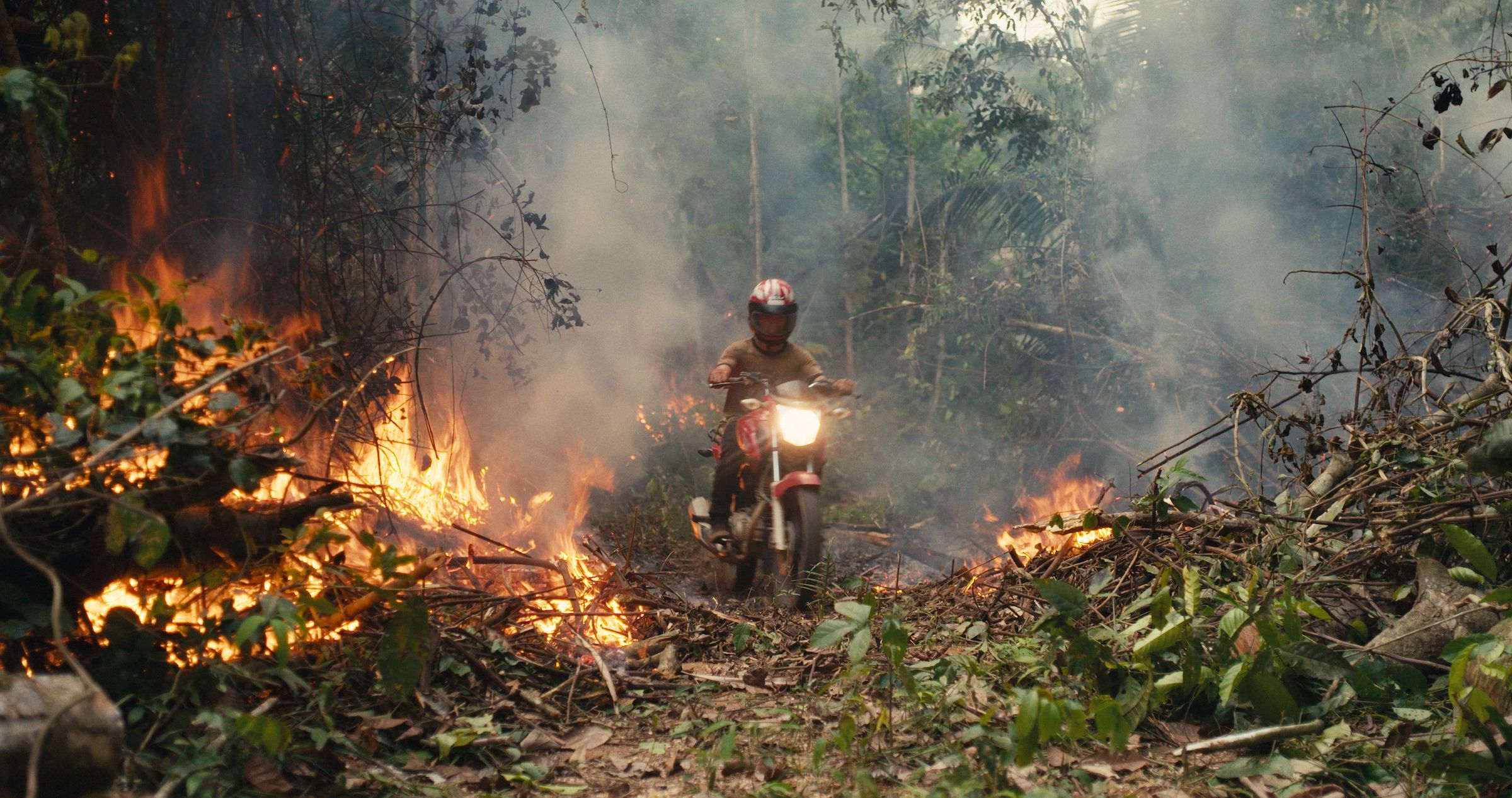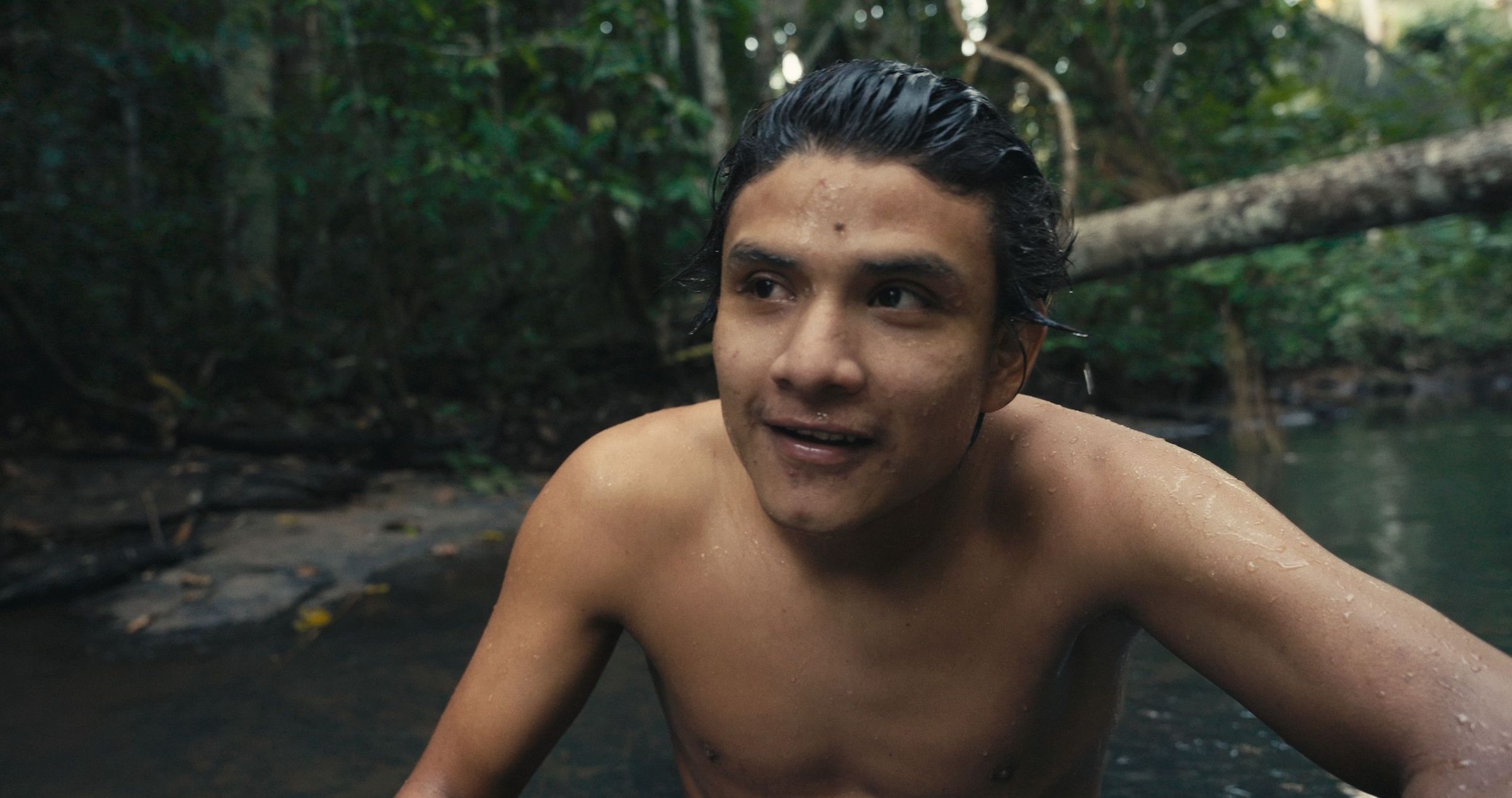In the western Brazilian state of Rondônia, deep inside the Amazon, a swath of rainforest spans an area two and a half times the size of Delaware—a rich green oasis surrounded by pale farmland. Fewer than 200 people live here: the Uru-eu-wau-wau Indigenous people, just a fraction of the population of thousands the Brazilian government first made contact with in the 1980s.
The Uru-eu-wau-wau—and their tireless fight against deforestation—are the subjects of the National Geographic documentary The Territory, produced in association with TIME Studios, which releases in theaters on Friday.
After first contact, the Uru-eu-wau-wau’s population dropped drastically due to conflict and disease introduced by outsiders. Since then, a new external threat has reared its head: deforestation of Indigenous land, and the subsequent destruction of the natural resources that the Uru-eu-wau-wau depend on. This community is a fiercely independent one, determined to preserve its own culture, and wary of outsiders for good reason. But when the Uru-eu-wau-wau cautiously allowed the creators of The Territory in, the crew did its homework, and the collaboration flourished.
The project began in late 2018, when director and cinematographer Alex Pritz first came across the work of Neidinha Bandeira, 63, a Brazilian activist who has spent more than four decades working directly with Indigenous communities. Bandeira’s “fiery force of spirit” drew Pritz in, and when the 2018 presidential election got underway in Brazil—and Jair Bolsonaro’s negative rhetoric around Indigenous people and the environment began to heat up—the filmmaker reached out.
Pritz and Brazilian producer Gabriel Uchida met with Bandeira. As they were driving together along the edge of the rainforest, it erupted into flames—a common tactic of guerrilla deforestation used by those who seek to illegally clear and farm Native land. Pritz asked Bandeira to stop the car and walked toward the fire. It was then that Bandeira knew the director was serious and courageous enough to make a film that would leave lasting change.
“I told him I wanted that story,” says Bandeira through a translator. “Not just go there and film it, but that would be something more to the Indigenous people, that would see the point of view from both sides.”
Showing all sides of the conflict

Bandeira acts as a gateway of sorts, coordinating access to the Uru-eu-wau-wau. Once she knew that the story was in good hands with the Territory team, she connected them with Bitatè Uru-eu-wau-wau, 22, the new president of the Jupaú Association, an Indigenous leadership body that engages with the government. (Members of the Uru-eu-wau-wau use the word as their last name.)
The activist and the Jupaú president visited New York City for the New York premiere of the documentary on Wednesday and sat for an interview (through the translator Adélia Ramos de Almeida) in the lobby of an Upper West Side hotel. Bitatè rested his cocar, a circular feathered headdress, on the coffee table.
“There were several journalists,” he says of those coming to his community. “Nothing would come back. You would have no return in the community. And we trusted Alex to see if this would be different.”
And different it was. The film—full of vivid, sweeping shots of the forest itself and the life within it—focuses on Bandeira and Bitatè as its central characters, lenses through which to view the battle unfolding in the world’s largest forest. But two other groups are represented as well: the Association of Rio Bonito—a group of farmers at the very edge of the Uru-eu-wau-wau territory—and invaders or so-called “settlers” who illegally squat on Uru-eu-wau-wau land. The idea to include all angles came from Bandeira, Bitatè, and the Uru-eu-wau-wau themselves.
“‘If we want to do something bigger and deeper and more honest, go talk to the people that are committing these acts of violence and destruction, because we’re not the cause of this conflict,’” Pritz, the director, recalls Bandeira and Bitatè telling him early on. “‘Because it does a disservice to those people that are on the frontlines dealing with this messy, convoluted, complex conflict to paint things in terms that are too reductionist or too simplistic.’’
The Territory team gives the farmers and the invaders enough rope to fully explain their perspectives. The former group states that the “Brazilian dream” is to own land and to make a living from it. The latter believes that that land belongs just as much to them as it does to its Indigenous inhabitants.
Sometimes, Pritz says, he felt pressure from those who were interested in funding the film to expand its scope beyond the Uru-eu-wau-wau to include more Indigenous peoples across the Amazon. But the team stood its ground. “We really wanted to keep a strict fidelity to this community, their own particular cultural nuances, their own particular situation,” Pritz says in a Zoom interview. “That just meant spending a lot of time sitting and listening and talking.”
Taking control of the narrative

When Pritz first arrived, a linguist from outside the community was hoping to embark on a project of documenting the native language of the older generations, Tupi-Kawahiva, so it could be taught in local schools. The six villages of the Uru-eu-wau-wau got together to discuss and vote—their consensus was ultimately no. The linguist was not allowed to record their language, because the Uru-eu-wau-wau knew firsthand the exploitation that could unfold when outsiders recorded their knowledge.
It was important “just to understand how much had been extracted from this community by people that looked like me, behaved culturally like me, had similar ancestry as me,” Pritz says. “And then the flipside of that: how important agency and ownership over their narrative was going to be if we were going to do this together.”
This agency was exercised in part by having the Uru-eu-wau-wau shoot certain scenes in the film. After the COVID-19 pandemic hit, they closed off borders to their land to protect their people: no journalists in or out. So much trust had been established by that point, though, that the Uru-eu-wau-wau simply asked for more equipment to finish the filming themselves.
“This is the first time that a movie made inside the Indigenous land brings resources to the Indigenous land, and I’m talking about financial resources,” Bandeira says. “That’s helping to protect the land. This makes a huge difference in our lives.”
When the crew arrived, many of the elders in the community had never seen a feature film. That became an important conversation: What goes into making a movie? Together, they discussed both the costs—time, privacy, trust—and the benefits—like the agency to control their own narrative and an impact campaign set up by the filmmakers.
Working to ensure a lasting impact

Marianna Olinger, the film’s impact producer, has been spearheading efforts to help build a multimedia and cultural center in the Uru-eu-wau-wau territory using both traditional architecture and modern designs. The center will include a production studio, podcasting area, equipment storage, and editing bays—designed for the Uru-eu-wau-wau to keep telling their own stories.
Although the threat of deforestation persists, the Uru-eu-wau-wau have taken matters into their own hands, establishing a highly specialized security and vigilance team—showcased in action toward the end of the film—that uses technology like cameras and drones to document illegal infringement on Indigenous land. Bitatè, for his part, will become the first member of the Uru-eu-wau-wau to attend college this fall, where he will study journalism. Indigenous people, he says, have a different way of seeing the world. He hopes The Territory reshapes how audiences view Native populations.
“To see the reality, I think, about the Indigenous people. To see our work, our threats, and also see how us Indigenous people look at nature,” Bitatè says. “And also that they are able to see the reality of Indigenous people—not only people here in the United States, but also in Brazil.”
More Must-Reads from TIME
- Cybersecurity Experts Are Sounding the Alarm on DOGE
- Meet the 2025 Women of the Year
- The Harsh Truth About Disability Inclusion
- Why Do More Young Adults Have Cancer?
- Colman Domingo Leads With Radical Love
- How to Get Better at Doing Things Alone
- Michelle Zauner Stares Down the Darkness
Contact us at letters@time.com